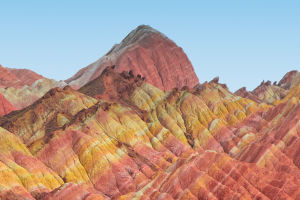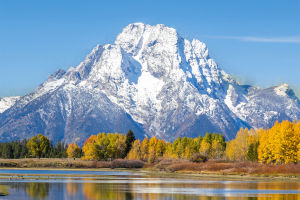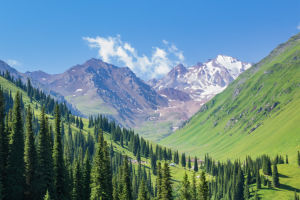Forest lakes are stunning natural landscapes that consist of a combination of lakes and forests.
Lakes have different origins and characteristics that are classified based on their genesis, water discharge, and salinity.
Baidu Encyclopedia classifies lakes into a tectonic, crater, glacial, weir, karst, river-formed, wind-formed, sea-formed, and artificial lakes or reservoirs.
Tectonic lakes form when the earth's crust is under tension, causing the ground to subside, and fill with water from surface runoff and groundwater. Crater lakes, on the other hand, are formed when a volcanic crater collapses and fills with water, creating a circular body of water.
Glacial lakes are formed when glaciers melt, and the meltwater accumulates in a basin or hollow.
Weir lakes are formed by the construction of a weir, dam, or levee to store water.
Karst lakes form in areas where the terrain is composed of limestone, and the groundwater dissolves the rock, creating a depression that fills with water. River-formed lakes occur when a river's flow is impeded, creating a body of water that extends upstream.
Wind-formed lakes are formed when wind erosion creates a depression that fills with water.
Sea-formed lakes, as the name suggests, are formed when the sea level rises and floods coastal lowlands, while artificial lakes or reservoirs are created by damming rivers or excavating the earth.
Lakes are also classified based on their water discharge, which can either be outflow lakes or inland lakes.
Outflow lakes, also known as throughput lakes, receive water from one or more streams or rivers and discharge it to other water bodies.
Inland lakes, on the other hand, do not receive or discharge water to other water bodies, and their water levels depend on precipitation, seepage, and evaporation.
Salinity is another important characteristic used to classify lakes, with freshwater lakes having a salinity of less than 1g/L, saltwater lakes having a salinity of 1-35g/L, and salt lakes having a salinity greater than 35g/L.
The source of the lake water varies and includes precipitation, surface runoff, groundwater, and, in some cases, snow and ice meltwater.
The consumption of lake water occurs through various processes such as evaporation, seepage, drainage, and exploitation.
Forests around lakes are essential components of forest lake ecosystems, providing habitat and resources for a wide range of plants and animals.
Forests help regulate the water balance of lakes, preventing erosion, and providing organic matter for the lake ecosystem.
They also help maintain the water quality of lakes by absorbing nutrients and pollutants and reducing soil erosion.
Forests around lakes also provide recreational opportunities such as fishing, boating, camping, and hiking.
Forest lakes are valuable natural landscapes that provide various benefits to humans and the environment.
Understanding the different types of lakes and their characteristics is crucial for their conservation and management.
Protecting forests around lakes is also essential to maintain the health and sustainability of forest lake ecosystems.


